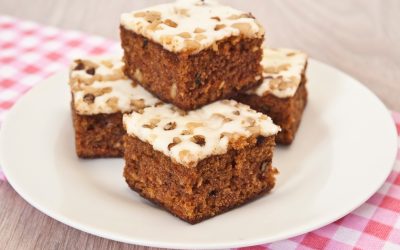Why managing weight is easier than you think
By: Tosca Reno, NTP, B.Sc., B.Ed., New York Times Best-Selling Author
Knowing how the Pros eat helps us find new inspiration for our own eating habits. What’s new for 2017? Find out here!
What you eat is who you are, from your physical shape to your emotions, even your personality. So what are you eating?
As a Nutritional Therapy Practitioner, what I know to be absolutely true about food is, confusion. Every media outlet from television, radio, to magazines and print, even your doctor and First Lady, Michelle Obama, has an opinion about what to eat, or not eat, to stay lean. Yet confusion still reigns.
To clear out the chaos, let’s try the 10 foods every nutritionist recommends. These will help you fight the belly bloat, stay lean and feel and function optimally.
Apple Cidar Vinegar
Universally our guts are challenged to do the best job possible of digesting what we eat. Why? Because most of us lack the correct enzymes and dining hygiene to do the job properly. Some of this is due to the abundance of processed foods, which tax our digestive abilities. A lot of it is due to the lack of time, or care, we give to how we eat. The result is digestive stress. A pain in the gut.
How? Apple Cider Vinegar is a tonic for lagging digestive systems. Placing just 2 tablespoons of raw apple cider vinegar into a glass of water, 20 minutes before each meal, prepares the stomach for the food to come, by activating the necessary digestive juices, essentially welcoming them to your table. This simple step can soothe a multitude of tummy troubles.
Herbal Teas
Drinking herbal teas is a pleasurable experience and offers a wonderful caffeine-free alternative while offering numerous health benefits. These can include everything from treating mild depression, aiding digestion, bringing on labour, helping you sleep, managing PMS, reducing inflammation, reducing high blood pressure, and warming and cooling the body.
How? Select a tea that suits your need. Brew and enjoy any time of day.
Onions, Leeks
With their unique combination of flavonoids and sulfur-containing nutrients, the allium vegetables belong in your diet on a regular basis. There’s plenty of research evidence to support including at least one serving of an allium – that’s the onion family of vegetables – in your daily menu. Leeks are particularly beneficial as pre-biotic food, helping to keep the gut environment happy. They are also important in protecting the cardiovascular system, thanks to their high levels of kaempferol, an antioxidant that reduces oxidative stress.
How? It is simple to add a cup of chopped leeks to most vegetable dishes as a flavour maker. They are particularly delicious in soups and stews.
Brassicas
If it smells bad, it’s good for you, in this case. The Brassica family includes a host of such stinky vegetables; broccoli, cauliflower, cabbage, bok choy, and rutabaga. That smell is an indicator of how powerfully these foods can assist your body. They are among the most nutritionally dense foods available. Rich in minerals, antioxidants and more, brassicas should be eaten daily.
Cruciferous vegetables contain anti-inflammatory, antioxidant, antibacterial, antifungal, neuroprotective, hypoglycemic and lipid-lowering molecules. People who eat cruciferous vegetables have a lower risk of developing cancer and heart disease.
How? Eat 1 cup of brassica vegetables daily. In soups, stews, salads or smoothies, they are unbeatable.
Turmeric
Turmeric is a bright orange fleshy root, related to ginger. Valued for its ability to reduce inflammation, enhance genetic ability, shrink cancerous tumors, and protect the brain, turmeric needs to appear in your diet regularly. It’s one of those hotshot ingredients that feels like having a bodyguard on your side at all times.
How? If you are able to source the fresh root, use grated turmeric in your cooking. In order to activate the epigenetic qualities of turmeric, you must heat it and add black pepper to the mix. Black pepper contains piperine, the vehicle by which curcumin, the active ingredient in turmeric, gains access to your cells and genes.
Bitter Foods
We naturally avoid bitter foods however the bitterness is a sign of high nutritional value. The plant has created molecules as natural occurring chemicals to resist pests and disease. These are generally bitter and are good for us in that they offset sweetness and act as a tonic for sluggishness.
If you can embrace eating dark cacao, herbs, leafy greens and bitter melon, you will soon realize the benefit for your liver. Bitter molecules support the liver as it works to cleanse your body. They help keep the liver moving while pushing out toxins.
How? Broccoli rabe, kale, chard, spinach, dandelion greens, raw cacao powder, Belgian endive, cilantro, and salad greens like radicchio, watercress, parsley, and arugula are the most common and most nutritious foods. Chop into salads, stews, soups and raw juices.
Fermented Foods
Fermented foods were once a staple in the diet. Our forefathers knew the value of consuming these on a daily basis, particularly in relation to maintaining health. Fermented foods are naturally high in probiotics and have the ability to transform health. Friendly microbes in fermented foods improve digestion, strengthen the immune system, stimulate metabolism, and positively affect mood.
The science behind fermentation is fascinating. Bacteria and enzymes in the substrate food (vegetables, fruit, dairy, grains, etc) change carbohydrates into compounds including alcohol or organic acids. The sour flavour of most fermented foods is the result of microbes eating sugars.
Include fermented foods like kimchee, kefir, kombucha, yogurt, sourdough, apple cider vinegar, pickles, miso and tempeh in your daily diet to significantly improve gut health.
See also: KEFIR: Eat More Bugs!
How? 1/2 – 1 cup daily!
Protein Rich Foods
Protein is a natural way to manage weight and blood sugar. In the Eat-Clean Diet®, I make a point of pairing proteins with carbohydrates. The science here results in a slowing down in the rise in blood sugar. Protein causes your stomach to empty more slowly because protein requires a great deal of work to break down. This too helps to slow down the release of blood sugar. Preventing wild swings in blood sugar is critical to weight and disease management.
How? 4 – 6 ounces per serving, 3 x per day
Sourdough Leavening
Sourdough leavening is the ancient way to make bread. Loaded with friendly Lactobacillus and other bacteria, these organisms generate greater amounts of lactic acid which helps to reduce the amount of phytic acid present in grains. The less phytic acid, the greater the amount of minerals available for you.
Sourdough also pre-digests the starches present in grains. This eases the digestive burden in your gut, helping to keep it flat and comfortable. As a result of the sourdough fermentation, an abundance of nutritional factors become readily available to you. These include antioxidants, the cancer-preventive peptide lunasin, and anti-allergenic substances, some of which may help in the treatment of auto-immune diseases. As well as B1-B6, B12, folate, thiamin, niacin, riboflavin, vitamin E, selenium, iron, manganese, calcium, magnesium, phosphorus, zinc and potassium.
How? Every time you eat bread.
Hydrate Well
Most people I work with are shocked to learn they have to drink more water to get rid of water. And when they do, they get a flat belly! When you are thirsty, you are already well past dehydrated. Often when you are hungry, you are really experiencing thirst instead.
See also: Tosca Reno’s Hydration Challenge
In an interesting conundrum, everyone is carrying a water bottle, even you, but still, dehydration is the number one nutritional deficiency in North America. This is thanks to the numerous caffeinated, sugar laden and alcoholic beverages we consume.
How? What is the right amount to drink? For every pound of body weight, drink at least half of that in ounces of water OR for every 8 ounce caffeinated/sugary or alcoholic beverage, drink 12 ounces of water. Your daily total should reach about 3 litres or 8 cups.




0 Comments